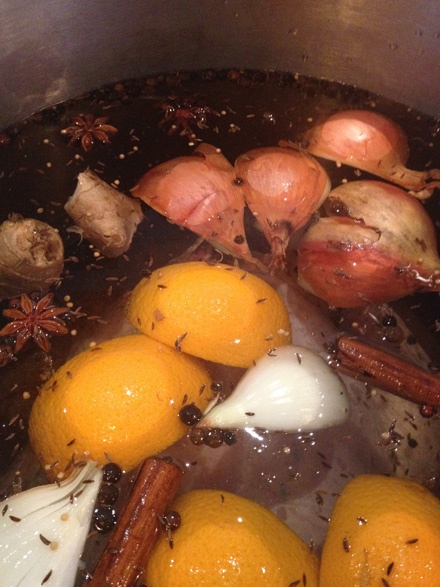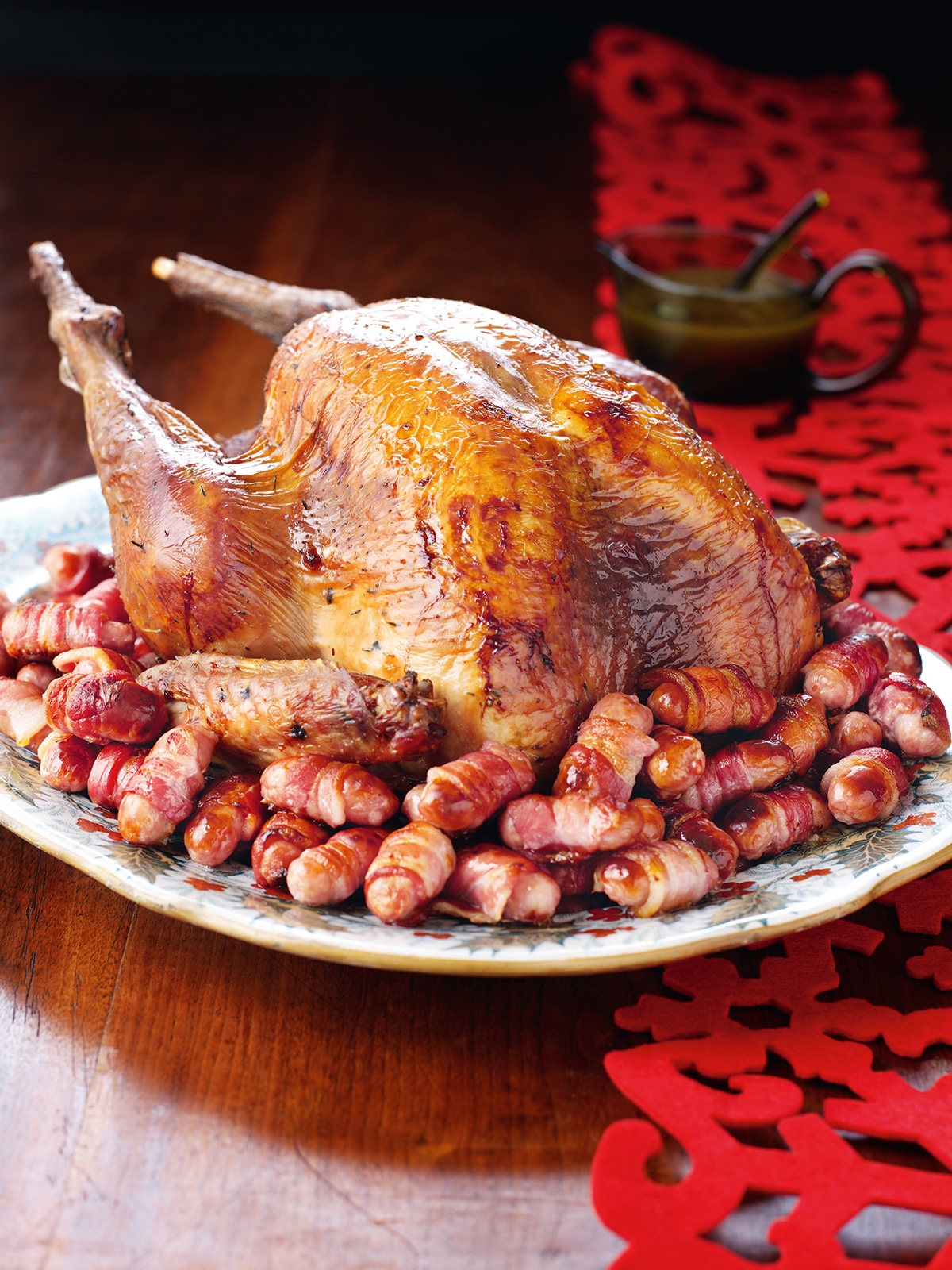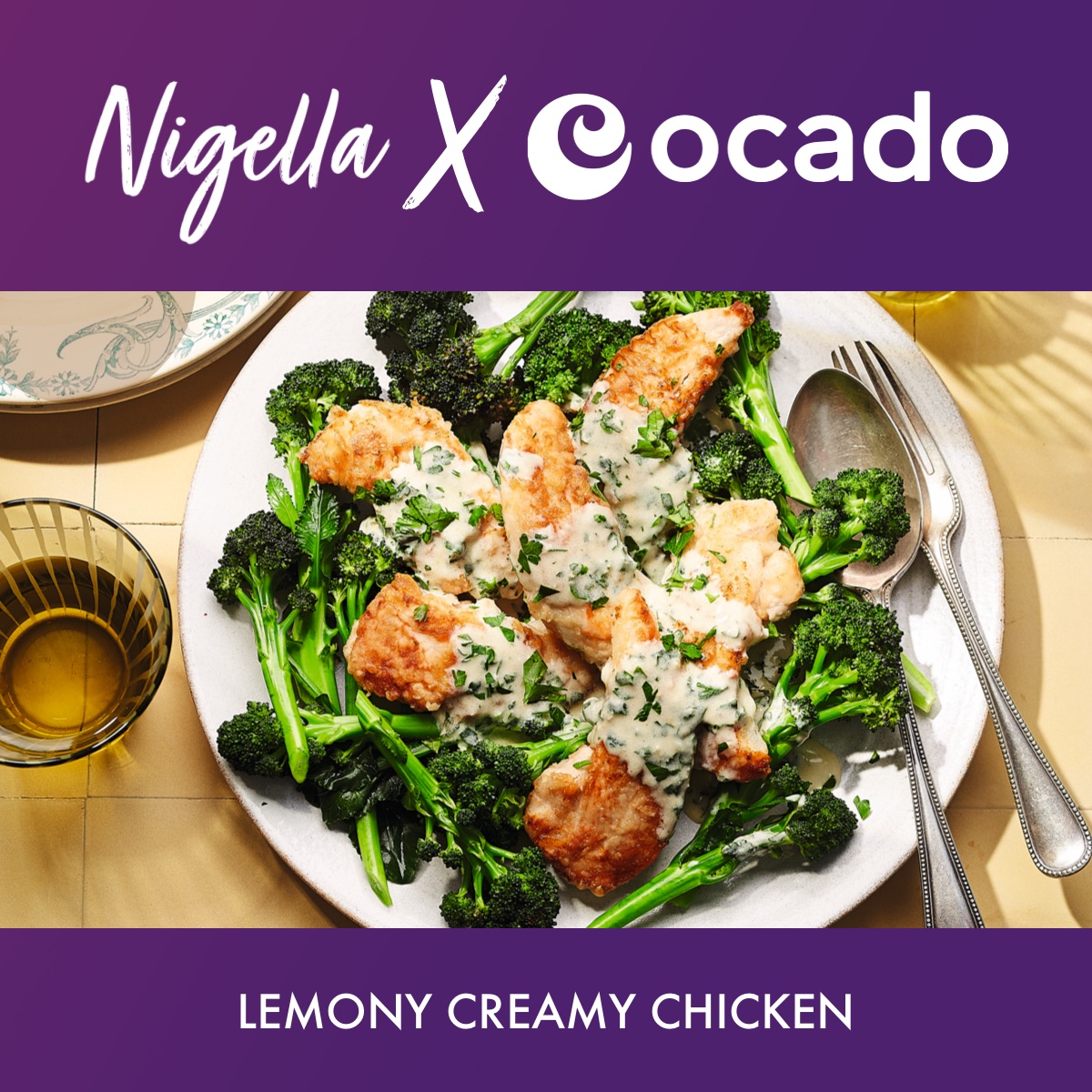I've had so many people asking me how to make sure their turkey is gorgeous and juicy, that I feel I need to make a pronouncement. There's just one word here that needs to be spoken. BRINE. I can't say it enough times: brine, brine, brine, brine. At its most basic, what this means is that you let your turkey steep in a salt-sugar solution for a couple of days. Any ingredient you add infuses the bird with flavour and so it is a wonderful way of making your turkey tasty! What's more, there's something about the brining method which makes the turkey easier to carve into elegantly thin slices, so not only will you feel better on the day but also the turkey will go further.

This is how I do my brine for what I call my Spiced and Superjuicy Turkey. After I've wittered on, I will append a stern set of instructions for how to cook it which I have compiled in consultation with a very stern home economist! I explain what I do and she jumps in with numbers and laws...

For a 12lb bird, I get out a big pan (or clean bin) and pour in 6 litres/quarts cold water, and add 250g sea salt flakes or 125g fine flowing salt, 200g caster sugar, 3 tablespoons peppercorns, 1 bouquet garni, a cinnamon stick broken in two, 1 tablespoonful caraway seeds, 4 cloves, 2 tablespoons whole allspice berries, 4 star anise, 2 tablespoons white mustard seeds, 2 onions, unpeeled but quartered, 1 6-centimetre piece fresh ginger, unpeeled but cut into 6 slices, 4 tablespoons maple syrup, 4 tablespoons runny honey, 1 large or 2 small oranges quartered - and if I have a bunch of parsley knocking about, I add the stalks. Give a bit of a mix, submerge the turkey and leave in a very cold place, covered, for 2 days. I have had to put mine outside before now, and in which case I do an elaborate criss cross of my son's skateboards on top to stop any foxes getting to it!
Once the bird has had its steeping time, remove it, dry it with kitchen towel and sit it in the sink on a rack to let it dry and come to room temperature before going in the preheated oven, at which time I anoint it with a mixture of 75g of melted goose fat or butter and 3 tablespoons of maple syrup which is enough to baste it with a couple of times, too. Before you look at my recommended cooking times, let me warn you that you cannot use the juices of a brined turkey to make gravy, so just boil up the giblets with a carrot and onion and so forth and make a turkey gravy that way. This actually is a blessing in disguise as making turkey gravy by having a huge oven tin smoking on the stove last thing on the 25th is not good for the nerves!
Turkey cooking times tend to seem quite short if you are used to the "standard" formula for calculating cooking times for poultry. However we have all been overcooking turkeys for years and complaining how dry and sawdusty they are. The table below gives Nigella's suggested timings for turkey (the table can also be found in Christmas on p117 and Feast on p6). The timings in the table are for a free-range turkey - these tend to have more fat than a lean mass-produced bird and the marbling of fat in the free-range turkey tends to conduct the heat faster meaning that it cooks more quickly. It also assumes that the turkey has been allowed to come up to room temperature before cooking (take the turkey out of the fridge about 2 hours before you want to cook it) and that the turkey has no stuffing and is not trussed. If you are stuffing your turkey, then you must weigh the already-stuffed bird, and cook according to the table below. When the turkey has had its allotted time in the oven check that it is cooked by piercing the turkey with the point of a sharp knife where the meat is thickest, behind the knee joint of the thigh, if the juices that run out are clear then the turkey is cooked. If they are still pink then let the turkey have another 15-20 minutes in the oven and test again. You can also use an instant-read thermometer to check if the turkey is cooked - this will be at 74c/165F. However, Paul Kelly of KellyBronze Turkeys says his birds are cooked through at 65c and this is what his turkey thermometer indicates.
When the turkey is ready, remove it from the oven, tent it with foil and let it rest for 30 to 60 minutes, out of a draught. If you are still nervous about turkey timings then we would also suggest that you consider brining your turkey as this will keep the bird moist even after longer cooking times (for full instructions see Christmas, p115). If you are brining your turkey then do cook your stuffing separately.
We would like to mention that in the US the FDA recommends that turkeys are cooked to a minimum internal temperature of 165F.
Turkey cooking times - oven fully preheated to 200c/400F
Weight of Bird Cooking Time
2.25kg/5lb 1 1/2 hours
3.5kg/8lb 1 3/4 hours
4.5kg/10lb 2 hours
5.5kg/12lb 2 1/2 hours
6.75kg/15lb 2 3/4 hours
7.5kg/17lb 3 hours
9kg/20lb 3 1/2 hours
11.5kg/25lb 4 1/2 hours



